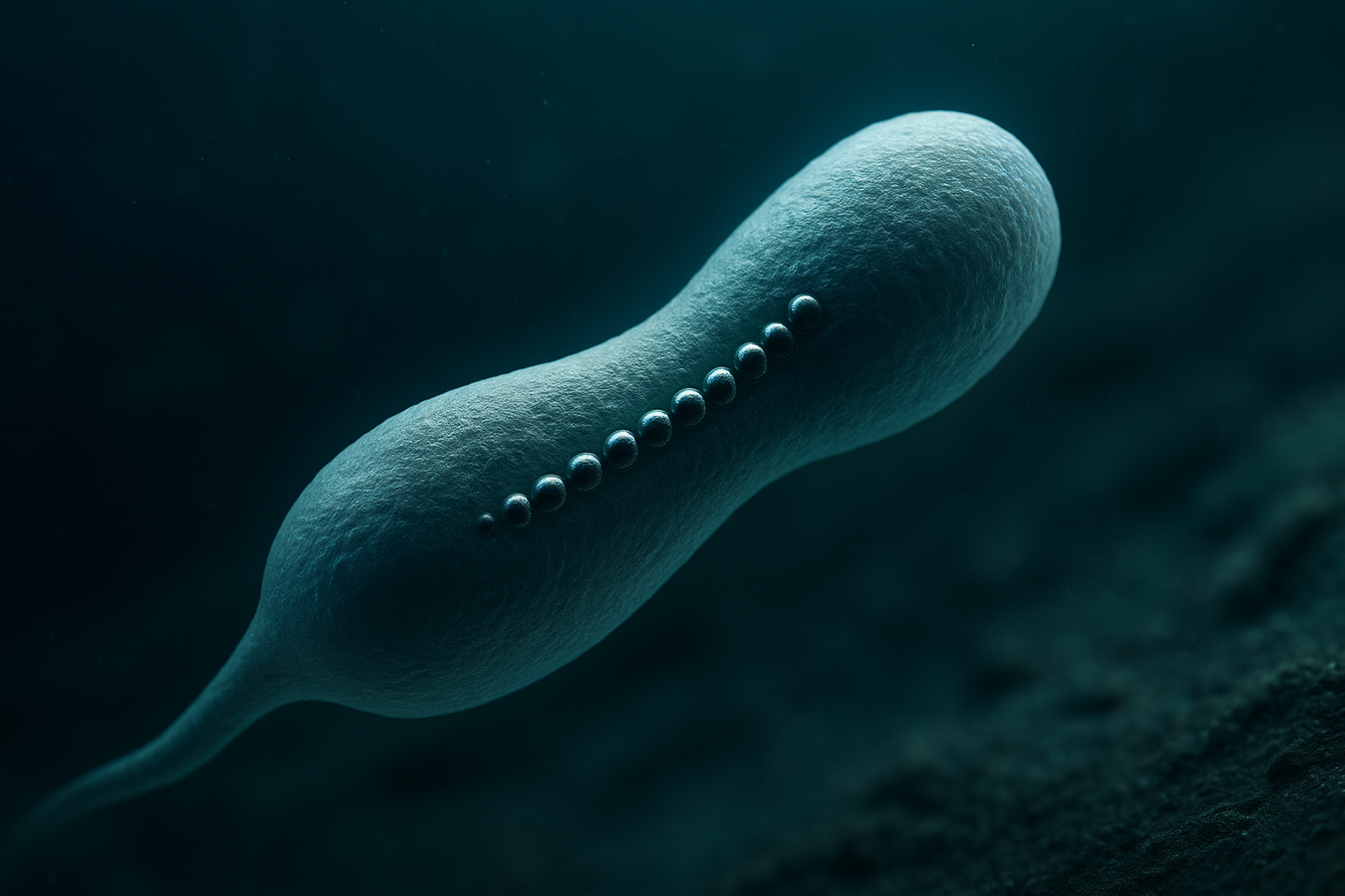Microbial Magnetic Trails Reveal Hotspots of Deep-Ocean Battery Metals

Title: Insights Into a Correlation Between Magnetotactic Bacteria and Polymetallic Nodule Distribution in the Eastern Central Pacific Ocean
Authors: Yan Liu, Shuangchi Liu, Victor A. Piedrahita, Peiyu Liu, Shi He, Hongmiao Pan, Yi Dong, Andrew P. Roberts, Lianjun Feng, Zihua Tang, and Jinhua Li
Journal & Year: Journal of Geophysical Research: Biogeosciences, 2024
BLUF: Sediment cores and high-resolution mapping across a 160 km transect of the Clarion-Clipperton Zone reveal that magnetotactic bacteria (MTB) and their magnetite microfossils concentrate where polymetallic nodule cover is greatest. Statistical models show that MTB metrics alone explain roughly 70 percent of the variance in nodule mass per square meter. This biological-geological linkage refines models of nodule formation and offers a low-impact proxy for delineating high-grade seafloor tracts.
Patchy distribution of ore-grade nodules complicates resource estimation and baseline planning. To test whether MTB helps govern that distribution, researchers paired autonomous-underwater-vehicle imagery with 52 box-core stations that sampled a gradient from nodule-poor to nodule-rich ground.
Live MTB were magnetically enriched and counted, magnetofossils were quantified with transmission electron microscopy, and pore-water chemistry was profiled to locate oxic-anoxic transition zones.
Nodule mass rises steeply once MTB concentrations surpass about ten million cells per gram of sediment. This relationship is visualized in Figure 3 of the article, where magnetofossil abundance on the x-axis tracks a logarithmic increase in nodule mass on the y-axis and yields an r² of 0.68 (p < 0.001).
Geochemical profiles show that nodule-rich sites possess an oxic-anoxic boundary within the upper centimeter, extending several centimeters deeper than at nodule-poor stations; such a micro-environment is optimal for MTB metabolism and continuous magnetite biomineralization.
Scanning electron micrographs in Figure 5 display intact magnetite chains partly encased in fresh manganese oxide on nodule rinds.
The images confirm that either living MTB or their remains become physically incorporated into growing nodules, implying a possible feedback between microbial activity and metal precipitation. Stations with high MTB activity also exhibit slightly elevated dissolved iron and silica, consistent with microbially mediated cycling that can feed additional nodule accretion.
Accurate targeting of high-grade nodule fields is central to economic modeling and collector-route optimization. Because MTB abundance and magnetofossil density rise predictably with nodule mass, rapid eDNA surveys or magnetic-particle counts could supplement sonar maps, reducing the number of physical cores needed during exploration and limiting initial disturbance.
Biological data of this kind can refine block models while signaling micro-habitats that warrant special monitoring. Recognizing that distinctive microbial consortia co-occur with metal-rich ores also informs future recovery studies, as post-extraction sediment conditions and microbial community structure may influence how quickly new nodules begin to form.



